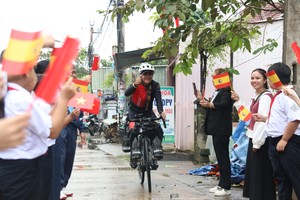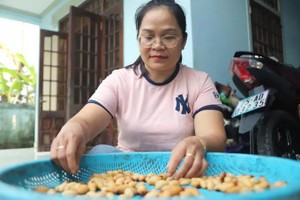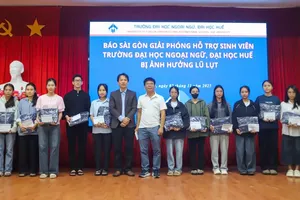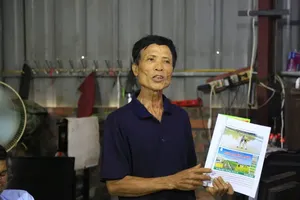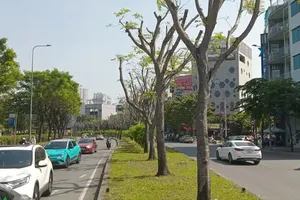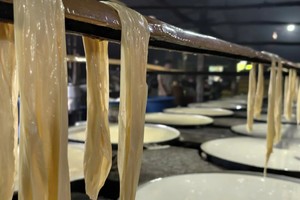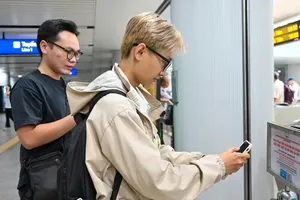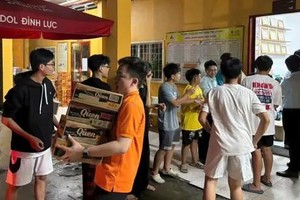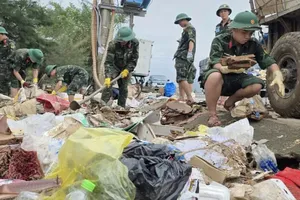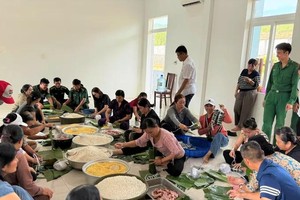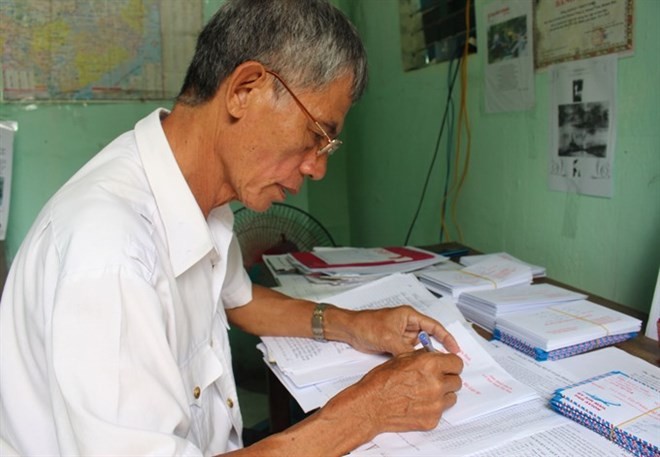
The martyr had been dead for years but the family couldn’t afford to search for his body.
The informant was veteran Dao Thien Sinh in Vinh Khanh district of the south central coastal province of Khanh Hoa.
Since 1976, Sinh has sent about 40,000 letters to martyrs’ families and relatives, supplying them with information he learned from trips to cemeteries nationwide.
“Since we heard about my elder brother’s death, every day my mother longed for a letter which might inform us of the place he was buried,” Sinh recalled.
Understanding the mother’s pain and martyrs families’ thirst for news, Sinh decided to start travelling to cemeteries.
At 20, Sinh fought in the Quang Tri battle field until Liberation Day on April 30, 1975. Four years later, he re-enlisted to fight in Cambodia. Returning from both battlefields, he began a normal job.
Using his free time, first he travelled to cemeteries close to Khanh Hoa province to search for his brother’s grave where he also found many unmarked graves. Then he started collecting information engraved on the graves and began writing letters to martyrs’ families.
“My father-in-law is lying down here. It’s such a feeling of warmth knowing my father-in-law can finally rest in peace,” said Tran Huyen Tran, the daughter-in-law of martyr Luong Khanh, as she visited Khanh’s grave.
“He died when my husband was only three. Years later, my mother-in-law lost hope in finding his grave due to the family’s economic hardships," said Tran, a resident of Nha Trang city.
“I and my husband burst into tears upon receiving Sinh’s letter informing us that our father was buried in a cemetery in Tay Ninh province and then Sinh and my father-in-law’s comrades helped bring him home,” Tram added, saying that the father enlisted in 1976 and died two years later in Cambodia.
“It was sad that my mother-in-law was not alive to witness this miracle.”
Over the past decades, Sinh has gone far and wide to more than 200 martyrs’ cemeteries including those for unknown soldiers from the central province of Quang Tri to provinces in the southeastern region.
Visiting any cemetery, Sinh noted down every name, age, birthplace and any information available on martyrs, searched for more information and decoded them before writing letters to the martyrs’ families.
The trips took place day or night; sometimes he even slept in cemeteries.
“I do this out of love for my fallen comrades. I always feel something ‘pushing’ in my mind and my heart,” the veteran said.
Sinh has also helped carry the martyrs’ remains home. “It is an indescribable joy to bring them home, seeing them rest in peace. I’m determined to do this job as long as my health allows,” said Sinh.
Sinh’s mission hasn’t gone unnoticed. He has received support from local post offices with more than 10,000 commune-based post offices delivering the letters to martyrs’ families for free. Many other veterans have also helped him with funds to buy envelopes and papers.
“My whole family is grateful for Sinh as he let us know the location of my elder brother’s grave, martyr Bui Van Phuoc who died in Cambodia aged 22,” said Bui Van Duoc, at his brother’s grave in Khanh Hoa province’s Ninh Hoa township.
Deputy head of Khanh Hoa province’s War Veterans’ Association, Ngo Mau Chien, said “Sinh is a person dedicated to work related to veterans, especially writing letters about martyrs’ graves.”
Due to his efforts, Sinh has been granted numerous certificates of merit by the Vietnam War Veterans’ Association and Khanh Hoa province’s War Veterans’ Association.
Living relatives of the martyrs call Sinh “a perfect connector”.
And Sinh will continue his journey as he is uncomfortable with so many Vietnamese martyrs’ resting place still unknown to their families.
